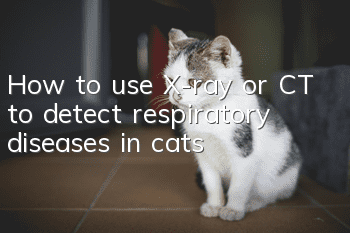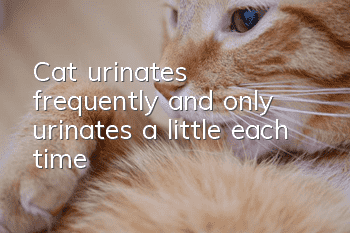How to use X-ray or CT to detect respiratory diseases in cats

Respiratory diseases are common diseases in cats. Symptoms are caused by contact between the respiratory system and pathogenic microorganisms, dust, and harmful gases walking in the air. Some pollen that causes allergies can also cause respiratory diseases in cats. Generally, Respiratory system diseases include rhinitis, tonsillitis, laryngitis, bronchitis, and severe cases can cause pneumonia. Clinical examination of cat respiratory diseases generally involves breathing movements, detection of some secretions, and percussion of the chest to determine the disease. In addition to the above methods, we can also use X-ray examination or CT scan to make a more accurate judgment on the cat’s respiratory disease. Examining cats using X-ray or CT is also called special examination method in clinical practice.
The cat was sent to the pet hospital. At this time, it had difficulty breathing due to respiratory diseases. First, the cat was put on an oxygen tube. It can receive oxygen to promote breathing. Because at this time, the cat has difficulty breathing. Most cats will be forced to enter. For further diagnosis, the clinic usually uses X-rays at this time. Your veterinarian will use a chest X-ray to evaluate your cat's chest for other signs of pneumonia, fluid accumulation, cardiac abnormalities, foreign objects (such as those lodged in the trachea), diaphragmatic hernia, or trauma. If fluid is found in the chest, then the veterinarian will collect a sample of the fluid for analysis. The fluid will be analyzed for color, turbidity, protein content, and cell content. The type of fluid will indicate what kind of disease is present, such as heart failure, a tumor, infection, or chyle in the chest.
X-ray examination methods are generally divided into two types. One is fluoroscopy. Fluoroscopic examination is simple and convenient. It can detect lesions on the cat’s chest. Under fluoroscopy, the doctor can change the animal’s posture and position at will. However, due to the limitations of fluoroscopy, The fluorescence is weak, the image is generally blurry, and details cannot be observed. You can only get a general view based on the doctor's experience, and the data cannot be saved. The second is radiographic examination, which is also a common X-ray examination. It can image on film, and the image is very clear and can be stored permanently. However, it can only observe one part at a time and cannot observe the movement changes of the organ. This is also its shortcomings.
During X-ray inspection, comprehensive and detailed observations must be made, such as the location of the observation, the clarity of the image, and whether it shows details of normal or pathological changes, etc. In particular, a detailed analysis of the shadow part is required, and the location, distribution, shape, density, size, etc. of the shadow part must be observed, so as to make a judgment on the disease.
If a cat is experiencing respiratory distress due to fluid in the lungs, removing some of the fluid first will provide emergency relief. The doctor will use a chest drainage tube for drainage, and once the cat is stable, other treatments can be used in conjunction with it. Computed tomography (CT) scans can also be used as a diagnostic tool. Cats need to be fed a contrast agent, that is, a barium meal, before a CT scan. In cases where ultrasound examination cannot provide a diagnosis, a CT scan can help determine whether the lung tumor can be surgically removed.. The main advantages of CT images are clarity and high resolution. Since CT scans are cross-sectional images, they are rarely interfered by overlapping tissues or organs.
The respiratory system of cats is very sensitive. Once infected, it can quickly enter a state of emergency and develop symptoms. Therefore, it is very important to observe the cat’s normal breathing pattern, understand the cat’s breathing rhythm, and examine the cat. In addition to the above methods, special examinations of the respiratory system include endoscopy, ultrasound, etc. We must find out the symptoms Appropriate diagnostic methods so that the best treatment can be adopted to ensure the health of the cat.
- Several things you must pay attention to when raising a cat
- Is it normal for cats to lose appetite in summer? Cat owners don’t need to panic!
- Is it necessary to vaccinate a cat that is 6 months old?
- Is Monstera deliciosa poisonous to cats?
- Is it normal for a cat not to urinate for two days after arriving at a new home?
- Should I stop the new cat from getting angry at the old cat?
- Can I pet a cat while pregnant?
- Are chinchilla cats expensive? Why don’t many people keep chinchillas?
- Red skin on cats is not ringworm
- How to train a cat to use cat litter? You need to know these methods!



